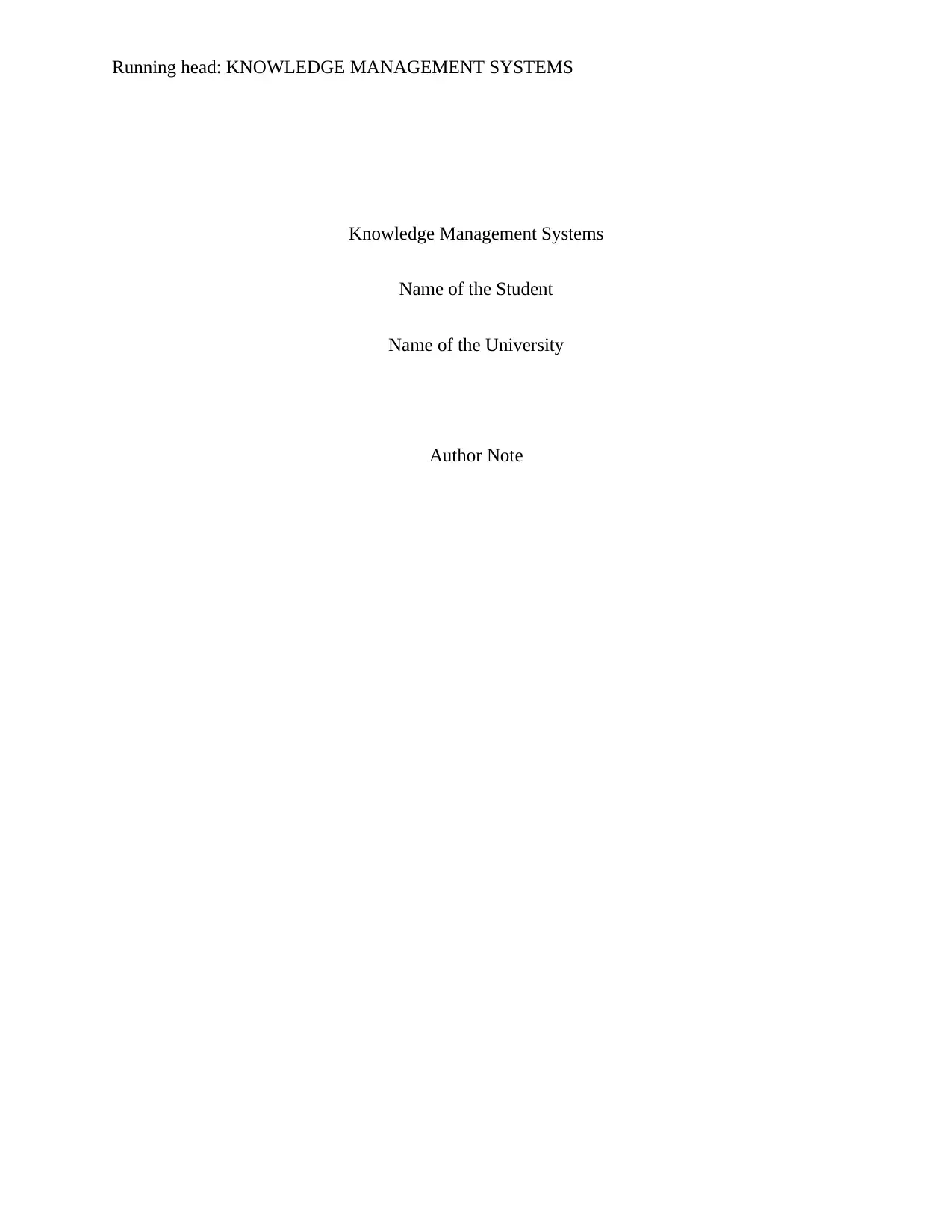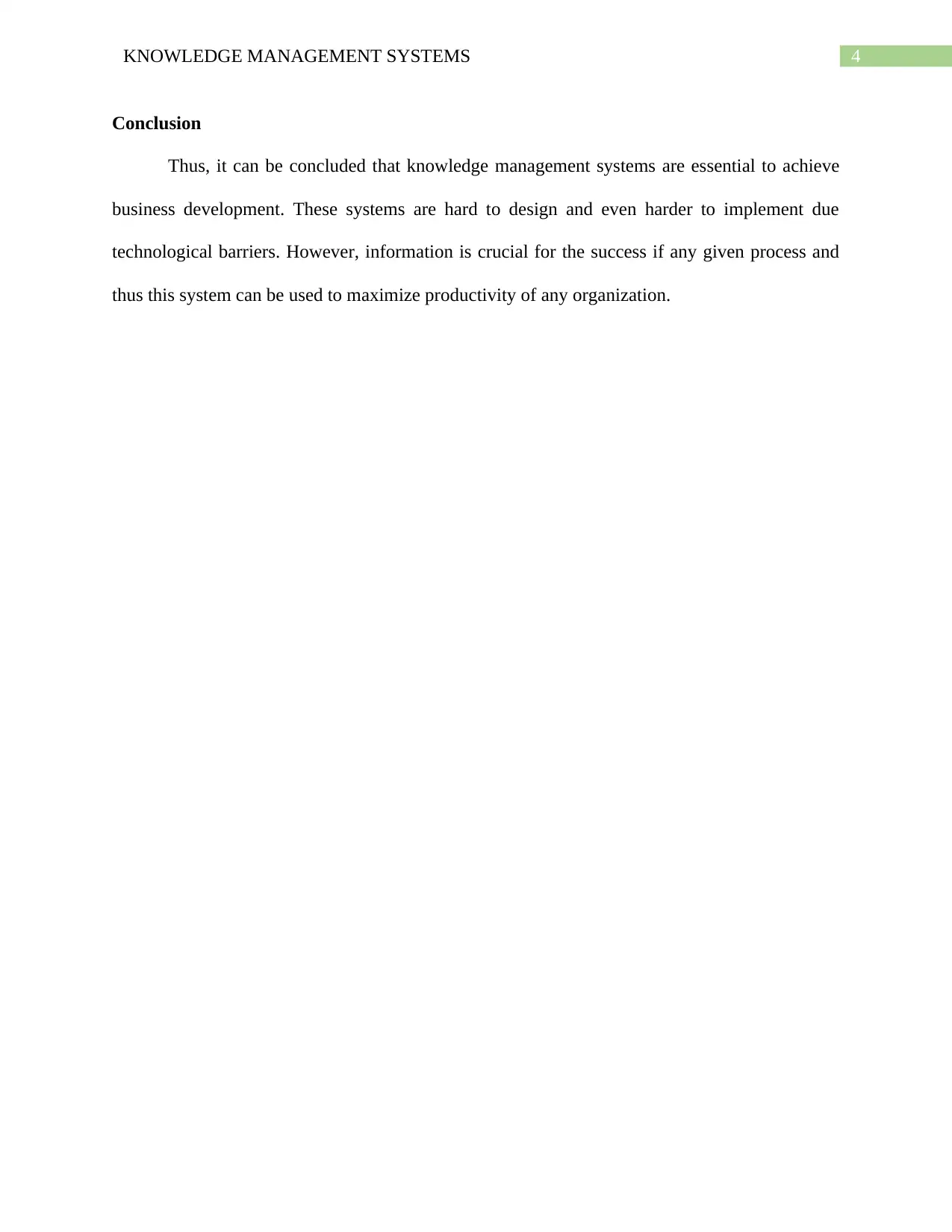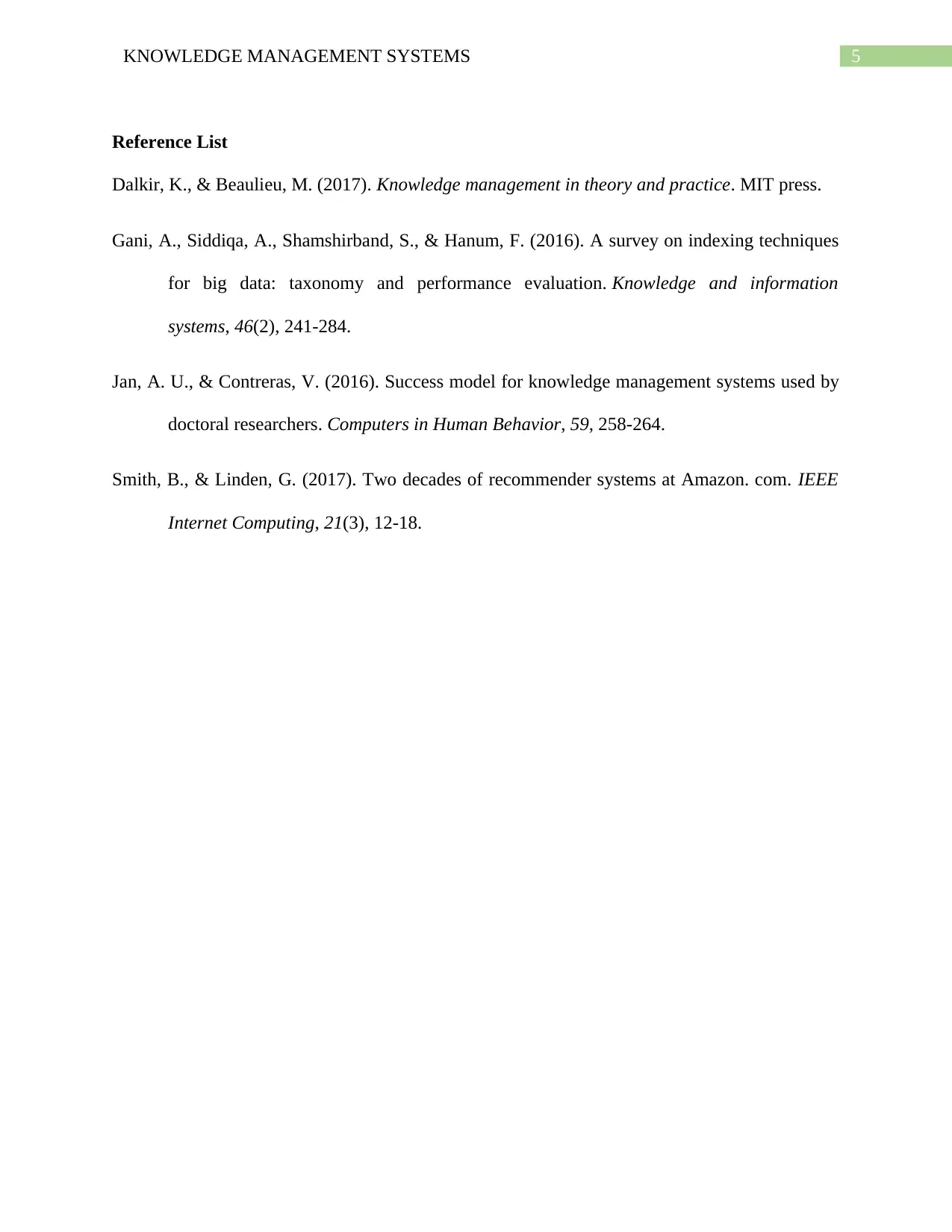Knowledge Management Systems: Design, Implementation, Review Report
VerifiedAdded on 2020/05/16
|6
|767
|105
Report
AI Summary
This report provides a comprehensive overview of Knowledge Management Systems (KMS) and their significance in business development. It discusses the essential aspects of KMS, starting with an introduction that highlights the importance of information and knowledge management for organizational growth. The report then delves into the design phase, emphasizing data collection, storage, indexing, and searchability as key processes. It further explains the implementation of KMS within organizations, including data collection through surveys and documents, data indexing, and storage on intranets, along with the necessity of user training and addressing language barriers in international companies. The review section focuses on evaluating the progress of the organization after implementing the KMS. The report concludes by emphasizing the importance of KMS in achieving business development, despite the technological challenges associated with its design and implementation. The report uses references to support the concepts discussed, providing a strong foundation for understanding KMS and its impact.
1 out of 6













![[object Object]](/_next/static/media/star-bottom.7253800d.svg)